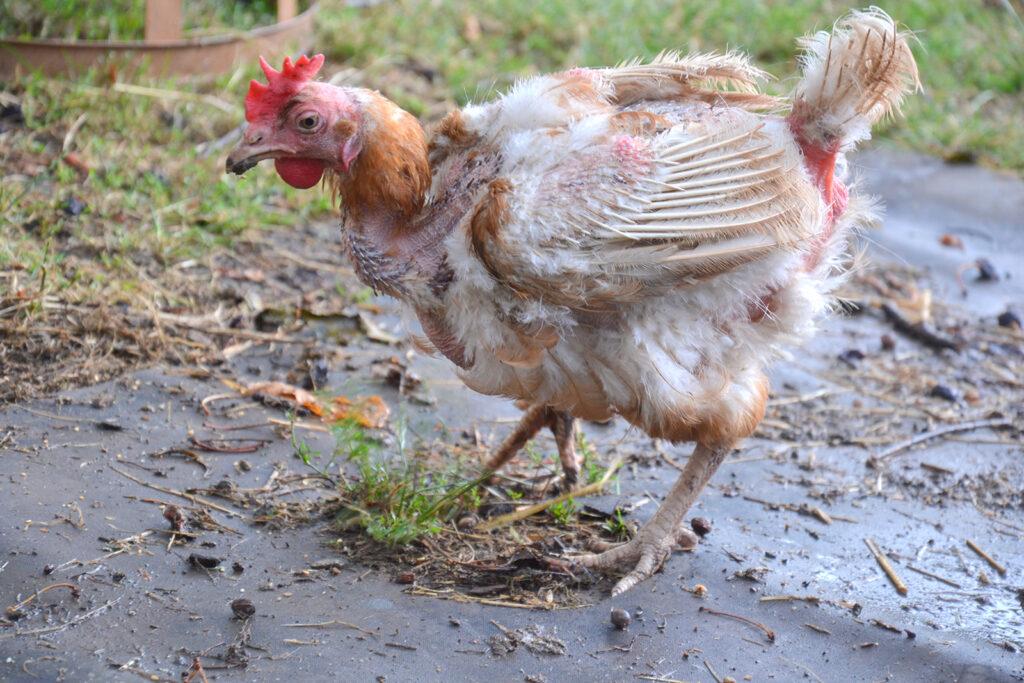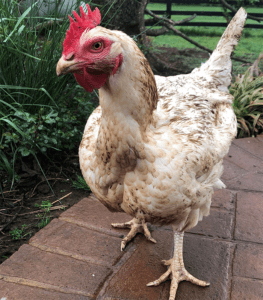You’ve probably heard of cage-free eggs and free-range eggs, and maybe you’ve wondered why people make the change. The reason is simple: The alternative, so-called “caged eggs,” are eggs that are produced at battery farms.
That might not sound bad, but battery farming is a cruel practice that causes undue suffering for billions of laying hens each year.
We wanted to shed light on the cruelty of battery egg farming, and help people understand why this practice is cruel, what people can do to end battery farming, and help them understand why they should never buy caged eggs again.
What Is Battery Farming?
Battery farming is the practice of intensively farming eggs. On battery farms, which aren’t farms at all, but industrial facilities, hens are packed into small cages, with little room for movement or to spread their wings.
The laying hens in these facilities, called “battery hens,” are fed fortified foods and antibiotics, and are often deprived of food and water. Essentially, the hens only live to lay eggs. In fact, many battery hens are sent to slaughter at just two years old, as they begin to lay fewer eggs.
Fortunately, many companies and people have become aware of the cruelty of battery farming. Companies like Nestle and McDonalds now only using cage-free eggs, for example. But unfortunately, battery farming is still widely practiced. According to 2017 data from the organization United Egg Producers, nearly 85 percent of eggs produced in the U.S. come from battery farms.
How long have we been battery farming eggs?
In the early 1900s, egg farming was commercialized in the Western world. Instead of eggs being produced on family farms, the practice was industrialized and battery farming became the norm.
Why was this the preferred method? Essentially, a battery farm is a method of egg farming on a massive scale. Laying hens are tightly packed into small cages, with multipole hens in each cage. For many agribusinesses, battery farms allow them to produce eggs very cheaply and on a massive scale. But sadly, this type of farming sacrifices quality of life for the hens.

What Are Battery Cages?
Battery hens lead miserable lives. The tiny cages they’re forced to live in year-round restrict movement, and because they can’t stretch their legs or wings and lose calcium from laying eggs 300 days per year, the hens suffer from many health issues, including severe dehydration, osteoporosis, psychology stress and early death.
Battery cages subject hens to an extremely confined space. The majority of caged hens are afforded only 70 square inches of cage space, which is about the size of a piece of computer paper. In battery cages, laying hens can’t fully stretch their wings, they can’t move around, and they can barely turn around. In fact, of all confined animals in agribusiness, battery hens face some of the most extreme confines of any animal.
Why Is Battery Farming Bad?
Battery farming facilities don’t look like farms at all. In a typical facility, hundreds of battery cages are stacked on top of each other, and the animals are confined for most of their lives. It’s more akin a prison, than a farm. As you can imagine, battery hens suffer from numerous health conditions, including:
Psychological suffering
In natural environments, hens like to perch, roost and nest. But these natural behaviors are discouraged in battery cages. Instead, the hens are packed tightly in and crowded, and that’s why it’s common to see many unnatural behaviors. For example, battery hens tend to display restlessness, aggressiveness, and even “vacuum” nesting, in which a hen pretends to make a nest.
Physical pain
The confinement in battery cages causes several painful conditions. Battery hens, for example, are prone to foot injuries. Painful lesions commonly form on their feet, after standing for hours on metal cage floors, and because they can’t scratch and root in the ground, overgrown nails can exacerbate foot problems.
Osteoporosis
Severe osteoporosis is also common. Battery hens produce so many eggs in their lifetimes, which depletes their bodies of calcium. In extreme cases, the bone fragility can cause paralysis or even spinal collapse. These animals then die of thirst and hunger, because they can’t take the few steps to water or food.
Forced molting
Hens naturally molt in winter, and during the molting season they tend to eat less and produce fewer eggs. At industrial egg farms, conditions are simulated to force the hens into molting and increase production. During a forced molt, food and water are restricted and light is reduced, which exacerbates psychological distress and discomfort.
Mutilation
Battery hens and even cage-free hens are often subjected to painful debeaking, a process in which one-half to two-thirds of the animal’s beak is removed. The beak is either cut or burnt off, a very painful procedure. This is done to reduced cannibalistic peaking, which is often a reaction to confinement and overcrowding.
Early Death
Laying hens – both caged and cage-free hens – are typically sent to slaughter at less than two years old. In normal conditions, a laying hen might live for 8-10 years. When they’re sent to slaughter, the animals may be transported long distances and deprived food and water.
Is Battery Farming Legal in the United States?
Unfortunately, battery farming is legal at the federal level in the United States. But in recent years, several states have banned or are phasing out battery cages.
Some of the states that have banned or are phasing out the practice include California, Colorado, Massachusetts, Michigan and Washington. In total, just nine US states have instituted bans or phase-outs.
Around the world, the practice continues to be widely used. Yet, several countries, including Germany, New Zealand, Norway and the European Union have phased-out battery cages and battery farming. Fortunately many US states and countries are pursuing legislation to end the practice of battery farming.
What Are Cage-Free Systems?
Many businesses and companies have pledged to only use “cage-free” eggs, which is a step in the right direction. But cage-free systems aren’t a perfect solution.
Although cage-free hens have a significantly better quality of life, they are still subjected to many cruelties, like debeaking and overcrowding. In cage-free systems, laying hens typically have room to spread and their wings and walk, and they can build their own nests. These are all natural behaviors, which improve the welfare of the animals.
Yet, there are downfalls. In cage-free operations, the hens still live in overcrowded conditions, often times flocks are in the thousands. And the animals are still confined indoors for most of their lives. To be considered cage-free, the hen must have just 1.25 square feet of space to move.
How You Can Help End Battery Farming
The simplest solution is to purchase humane eggs at the grocery store. The two best options are:
- Free-Range Eggs – Free-range hens can move freely between indoor and outdoor spaces. Many labels like the Certified Humane label, require there to be at least two square feet of outdoor space per bird.
- Pasture-Raised Eggs – Pasture-raised hens live free to roam outdoors, and this type of system affords the best quality of life for the hens. To be considered “pasture-raised,” each bird must have 108 square feet of space outdoors.
Another way to end battery farming is to support companies that have pledged to use only humane eggs. Coffee chains like Peet’s and Caribou, for example, have completed phase-outs, and now only use 100% cage-free eggs. Other businesses like Mondelez, the parent company of brands like Oreo, Ritz and Triscuit, has also completed a transition to 100% cage-free eggs.
You can also support local and state legislation, provide support to battery hen rescues, or purchase eggs from local, humane sources (e.g. neighbors with backyard coops and small farms that sell eggs).
Good News: The U.S. Is Moving Away from Cage Eggs
Back in 2005, just 2% of the 320 million egg-laying hens in the United States were cage-free. But thanks to local and state legislation, and companies instituting phase-outs, we’ve significantly reduced our reliance on battery farmed eggs.
According to estimates from the Humane Society, by the end of 2021, nearly half of egg-laying hens in the U.S. will be cage-free. Recent data from the United Egg Producers, suggests today nearly 30% of eggs produced in the US are cage-free.
The Mad Turkey Farm supports efforts to end battery farming, and we provide a haven for many farm animals rescued from factory farms. Consider a donation today to help us continue our work.

